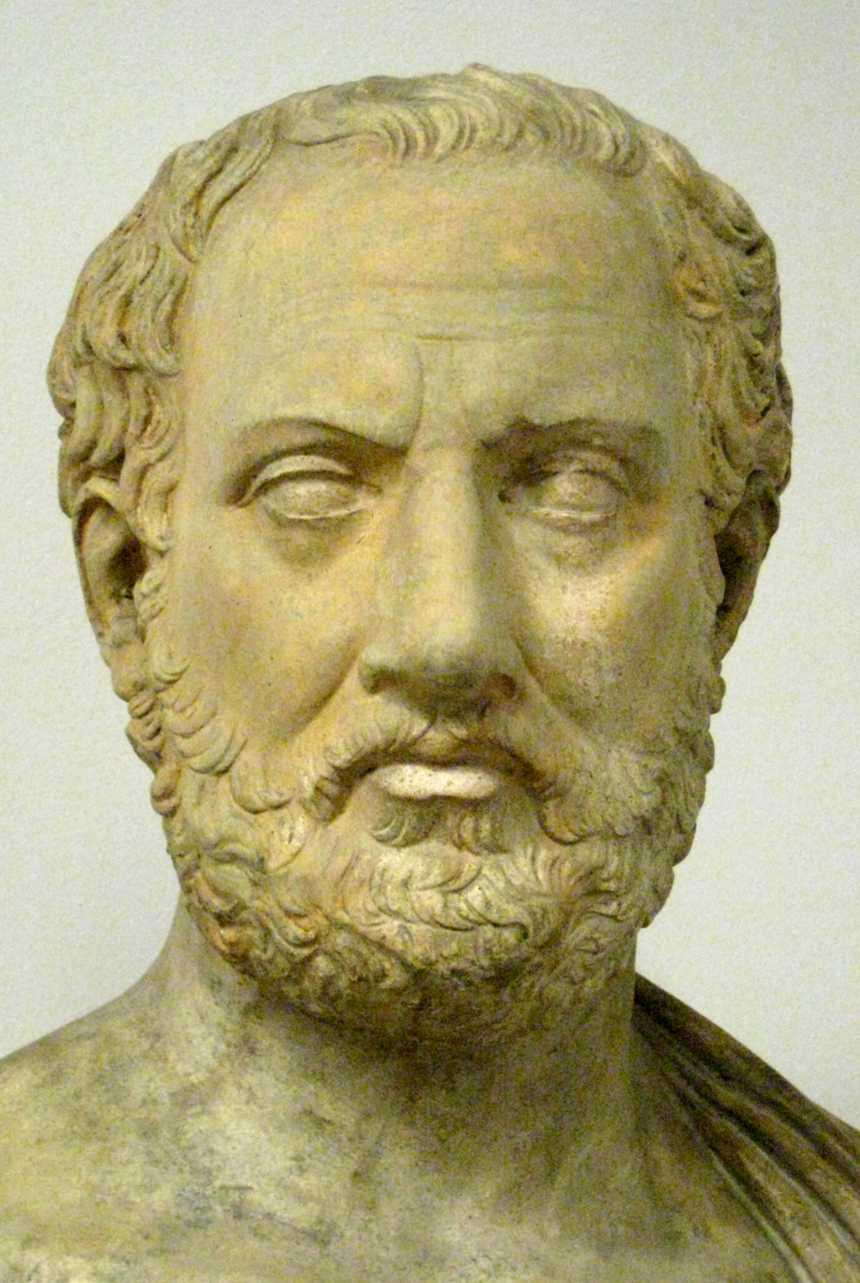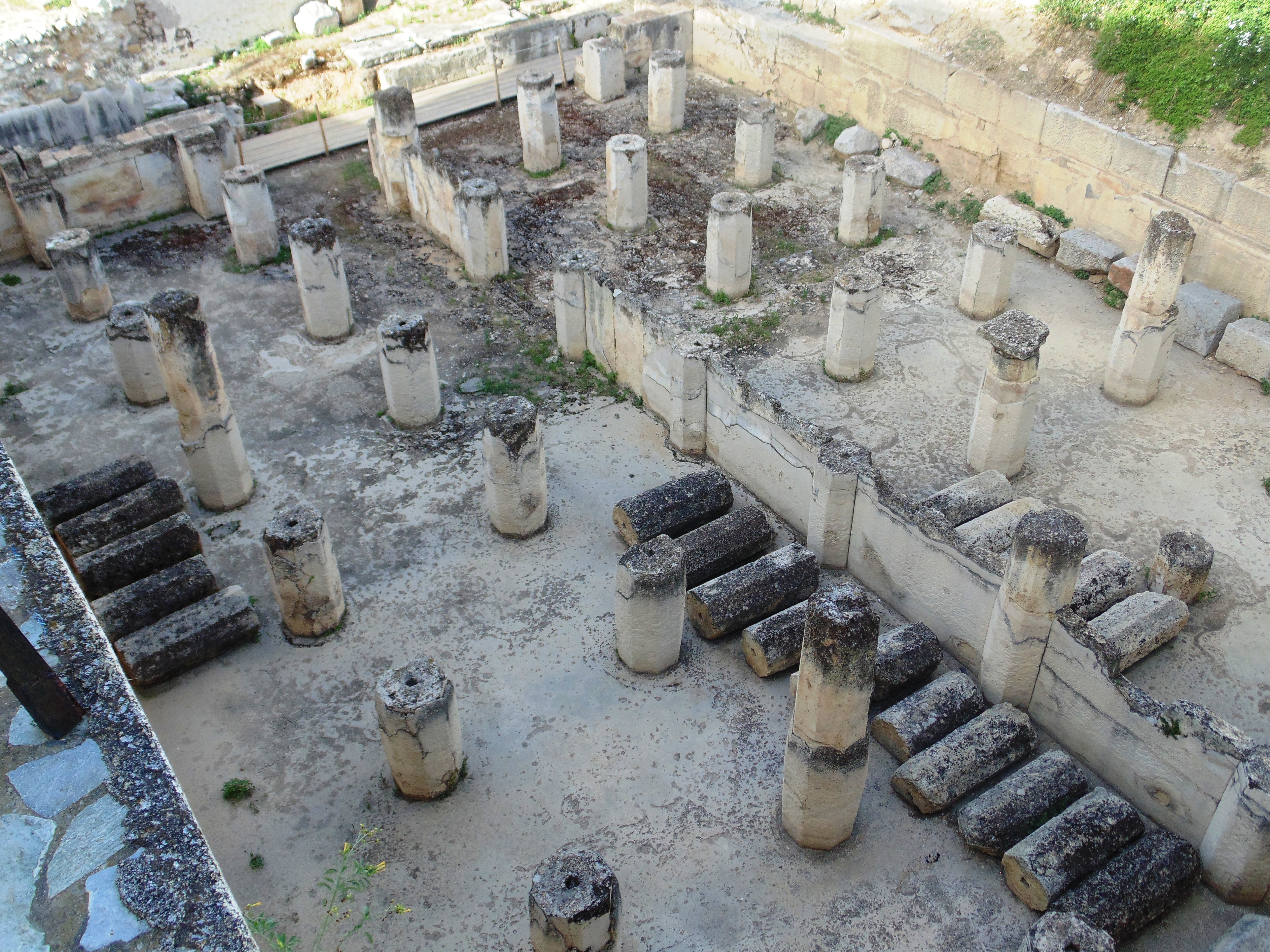|
Cnemus
Cnemus (Greek: Κνῆμος) was the Spartan fleet commander during the second and third years (430–29 BC) of the Archidamian War. During his command, Cnemus oversaw a series of operations that met with failure. As a result, the Spartans began to question Cnemus' leadership and sent several advisers to assist him in his command. Military service Zacynthian Campaign Cnemus' earliest recorded military operation during the Archidamian War occurred in the summer of 430 BC, at the island of Zacynthus. Because Zacynthus was populated by Achaeans who had allied themselves with Athens, Cnemus led an expedition, made up of Spartans and their allies, against the island. The expeditionary force consisted of 100 ships, carrying a total of 1000 Spartan hoplites. Although Cnemus' forces destroyed much of Zacynthus, when they realized that the island's population would refuse to surrender, the expeditionary force returned home, having achieved little. Acarnanian Campaign The summer ... [...More Info...] [...Related Items...] OR: [Wikipedia] [Google] [Baidu] |
Spartan Navarch
The navarch ( gr, ναύαρχος, nauarchos) was the magistrate who commanded the fleet in Ancient Sparta. History and role The powers of the navarch were extensive and were not subordinate to the two Spartan kings.Thommen, "Xenophon und die spartanische Nauarchie", p. 314. The navarch commanded the fleet, but could also lead his embarked troops on land, performed the sacrifices, distributed wages and booty, negotiated with foreign states, and even administered the territories he captured. An ambitious man such as Lysander could therefore yield formidable influence in Sparta through his time as navarch at the end of the Peloponnesian War (431–404). As a result, Aristotle rightly described the navarchy as another kingship.Sealey, "Die spartanische Nauarchie", p. 337. Indeed, the navarch's powers were probably taken away from the kings at some point during the 6th century, because they had no authority on the sea. For example, Herodotus writes that in 480 king Leotychidas was al ... [...More Info...] [...Related Items...] OR: [Wikipedia] [Google] [Baidu] |
Zakynthos
Zakynthos (also spelled Zakinthos; el, Ζάκυνθος, Zákynthos ; it, Zacinto ) or Zante (, , ; el, Τζάντε, Tzánte ; from the Venetian form) is a Greek island in the Ionian Sea. It is the third largest of the Ionian Islands. Zakynthos is a separate regional unit of the Ionian Islands region, and its only municipality. It covers an area of and its coastline is roughly in length. The name, like all similar names ending in , is pre-Mycenaean or Pelasgian in origin. In Greek mythology the island was said to be named after Zakynthos, the son of the legendary Arcadian chief Dardanus. Zakynthos is a tourist destination, with an international airport served by charter flights from northern Europe. The island's nickname is "the Flower of the Levant", bestowed upon it by the Venetians who were in possession of Zakynthos from 1484 to 1797. History Ancient history The ancient Greek poet Homer mentioned Zakynthos in the ''Iliad'' and the ''Odyssey'', stating tha ... [...More Info...] [...Related Items...] OR: [Wikipedia] [Google] [Baidu] |
Brasidas
Brasidas ( el, Βρασίδας, died 422 BC) was the most distinguished Spartan officer during the first decade of the Peloponnesian War who fought in battle of Amphipolis and Pylos. He died during the Second Battle of Amphipolis while winning one of his most spectacular victories. Biography Brasidas was the son of Tellis (Τέλλις) and Argileonis, and won his first laurels by the relief of Methone, which was besieged by the Athenians (431 BC). During the following year he seems to have been eponymous ephor, and in 429 BC he was sent out as one of the three commissioners to advise the admiral Cnemus. As trierarch he distinguished himself in the assault on the Athenian position at the Battle of Pylos, during which he was severely wounded In 424 BC, while Brasidas mustered a force at Corinth for a campaign in Thrace, he frustrated an Athenian attack on Megara. Immediately afterwards he marched through Thessaly at the head of 1,700 hoplites (700 helots and 1000 Pelopon ... [...More Info...] [...Related Items...] OR: [Wikipedia] [Google] [Baidu] |
Thesprotians
The Thesprotians ( grc, Θεσπρωτοί, Thesprōtoí) were an ancient Greek tribe, akin to the Molossians, inhabiting the kingdom of Thesprotis in Epirus. Together with the Molossians and the Chaonians, they formed the main tribes of the northwestern Greek group. On their northeastern frontier, they neighbored the Chaonians and on their northern frontier they neighbored the kingdom of the Molossians. The poet Homer frequently mentions Thesprotia in the ''Odyssey'', which had friendly relations with Ithaca and Doulichi. The Thesprotians originally controlled the Dodona oracle, the oldest religious shrine in Greece. Later, they were part of the Epirus until they were annexed into the Roman Empire. Geography Strabo puts the Thesprotians' territory, Thesprotis, on the coast of southwest Epirus. Thesprotis stretched between the Ambracian Gulf in the south to the River Thyamis (modern-day Kalamas) in the north, and between the Pindus mountains and the Ionian Sea. According ... [...More Info...] [...Related Items...] OR: [Wikipedia] [Google] [Baidu] |
5th-century BC Spartans
The 5th century is the time period from 401 (Roman numerals, CDI) through AD 500, 500 (Roman numerals, D) ''Anno Domini'' (AD) or Common Era (CE) in the Julian calendar. The 5th century is noted for being a period of migration and political instability throughout Eurasia. It saw the Fall of the Western Roman Empire, collapse of the Western Roman Empire, which came to an end in 476 AD. This empire had been ruled by a succession of weak emperors, with the real political might being increasingly concentrated among military leaders. Internal instability allowed a Visigoth army to reach and Sack of Rome (410), ransack Rome in 410. Some recovery took place during the following decades, but the Western Empire received another serious blow when a second foreign group, the Vandals, occupied Carthage, capital of an extremely important province in Africa (Roman province), Africa. Attempts to retake the province were interrupted by the invasion of the Huns under Attila. After Attila's defeat, b ... [...More Info...] [...Related Items...] OR: [Wikipedia] [Google] [Baidu] |
Piraeus
Piraeus ( ; el, Πειραιάς ; grc, Πειραιεύς ) is a port city within the Athens urban area ("Greater Athens"), in the Attica region of Greece. It is located southwest of Athens' city centre, along the east coast of the Saronic Gulf. The municipality of Piraeus and four other suburban municipalities form the regional unit of Piraeus, sometimes called the Greater Piraeus area, with a total population of 448,997. At the 2011 census, Piraeus had a population of 163,688 people, making it the fifth largest municipality in Greece2011 POPULATION AND HOUSING CENSUS, HELLENIC STATISTICAL AUTHORITY, http://www.statistics.gr/documents/20181/1215267/A1602_SAM01_DT_DC_00_2011_03_F_EN.pdf/cb10bb9f-6413-4129-b847-f1def334e05e and the second largest (after the municipality of Athens) within the Athens urban area. Piraeus has a long recorded history, dating back to ancient Greece. The city was founded in the early 5th century BC, when plans to make it the new port of Athe ... [...More Info...] [...Related Items...] OR: [Wikipedia] [Google] [Baidu] |
Megara
Megara (; el, Μέγαρα, ) is a historic town and a municipality in West Attica, Greece. It lies in the northern section of the Isthmus of Corinth opposite the island of Salamis, which belonged to Megara in archaic times, before being taken by Athens. Megara was one of the four districts of Attica, embodied in the four mythic sons of King Pandion II, of whom Nisos was the ruler of Megara. Megara was also a trade port, its people using their ships and wealth as a way to gain leverage on armies of neighboring poleis. Megara specialized in the exportation of wool and other animal products including livestock such as horses. It possessed two harbors, Pagae to the west on the Corinthian Gulf, and Nisaea to the east on the Saronic Gulf of the Aegean Sea. It is part of Athens metropolitan area. Early history According to Pausanias, the Megarians said that their town owed its origin to Car, the son of Phoroneus, who built the citadel called 'Caria' and the temples of Dem ... [...More Info...] [...Related Items...] OR: [Wikipedia] [Google] [Baidu] |
Thucydides Pushkin02
Thucydides (; grc, , }; BC) was an Athenian historian and general. His ''History of the Peloponnesian War'' recounts the fifth-century BC war between Sparta and Athens until the year 411 BC. Thucydides has been dubbed the father of "scientific history" by those who accept his claims to have applied strict standards of impartiality and evidence-gathering and analysis of cause and effect, without reference to intervention by the gods, as outlined in his introduction to his work. He also has been called the father of the school of political realism, which views the political behavior of individuals and the subsequent outcomes of relations between states as ultimately mediated by, and constructed upon, fear and self-interest. His text is still studied at universities and military colleges worldwide. The Melian dialogue is regarded as a seminal work of international relations theory, while his version of Pericles' Funeral Oration is widely studied by political theorists, historian ... [...More Info...] [...Related Items...] OR: [Wikipedia] [Google] [Baidu] |
Phormio
Phormio ( el, Φορμίων ''Phormion'', ''gen''.: Φορμίωνος), the son of Asopius, was an Athenian general and admiral before and during the Peloponnesian War. A talented naval commander, Phormio commanded at several famous Athenian victories in 428 BC, and was honoured after his death with a statue on the acropolis and a state funeral. He is considered one of Athens' many great admirals, alongside Themistocles and Cimon. Early commands Phormio first appears in the historical record in 440 BC, when he shared with Thucydides, Hagnon, and others the command of the Athenian fleet in the later part of the Samian War. In 432 BC, he commanded a force of 1600 hoplites sent to assist in the siege of Potidaea. Phormio led his men up slowly from the side of the city that the Athenians had not yet surrounded and constructed a counter-wall to complete Potidaea's investment. After Potidaea was firmly besieged, Phormio led his men in a successful campaign against Athens' enemies i ... [...More Info...] [...Related Items...] OR: [Wikipedia] [Google] [Baidu] |
Nafpaktos
Nafpaktos ( el, Ναύπακτος) is a town and a former municipality in Aetolia-Acarnania, West Greece, situated on a bay on the north coast of the Gulf of Corinth, west of the mouth of the river Mornos. It is named for Naupaktos (, Latinized ''Naupactus''), an important Athenian naval station in the Peloponnesian war. As a strategically crucial possession controlling access to the Gulf of Corinth, Naupaktos changed hands many times during the Crusades and the Ottoman–Venetian Wars. It was under Venetian control in the 15th century, and came to be known by the Venetian form of its name, Lepanto. It fell to the Ottoman Empire in 1499 and was used as naval station by the Ottoman Navy in the 16th century, being the site of the decisive victory by the Holy League in the Battle of Lepanto in 1571. Except a brief period of Venetian control in 1687–1699, Lepanto remained under Ottoman control until Greek independence in 1829. The modern municipality was incorporated in 194 ... [...More Info...] [...Related Items...] OR: [Wikipedia] [Google] [Baidu] |
Oiniades
Oiniades ( el, Οινιάδες) is a municipal unit of the municipality Missolonghi, Greece. The municipal unit has an area of 270.899 km2. It was named after the ancient town of Oeniadae. History Ancient Oeniadae ( grc, Οἰνιάδαι) was a port town on the west bank of the river Achelous and one of the most important towns of ancient Acarnania. Oeniadai was first mentioned in the 5th century BC.OINIADAI Greece entry in The Princeton Encyclopedia of Classical Sites. It was situated against a hill in the marshes, which protected it from invaders. Its location has been identified on that of the present village . It was an important port on the ... [...More Info...] [...Related Items...] OR: [Wikipedia] [Google] [Baidu] |






